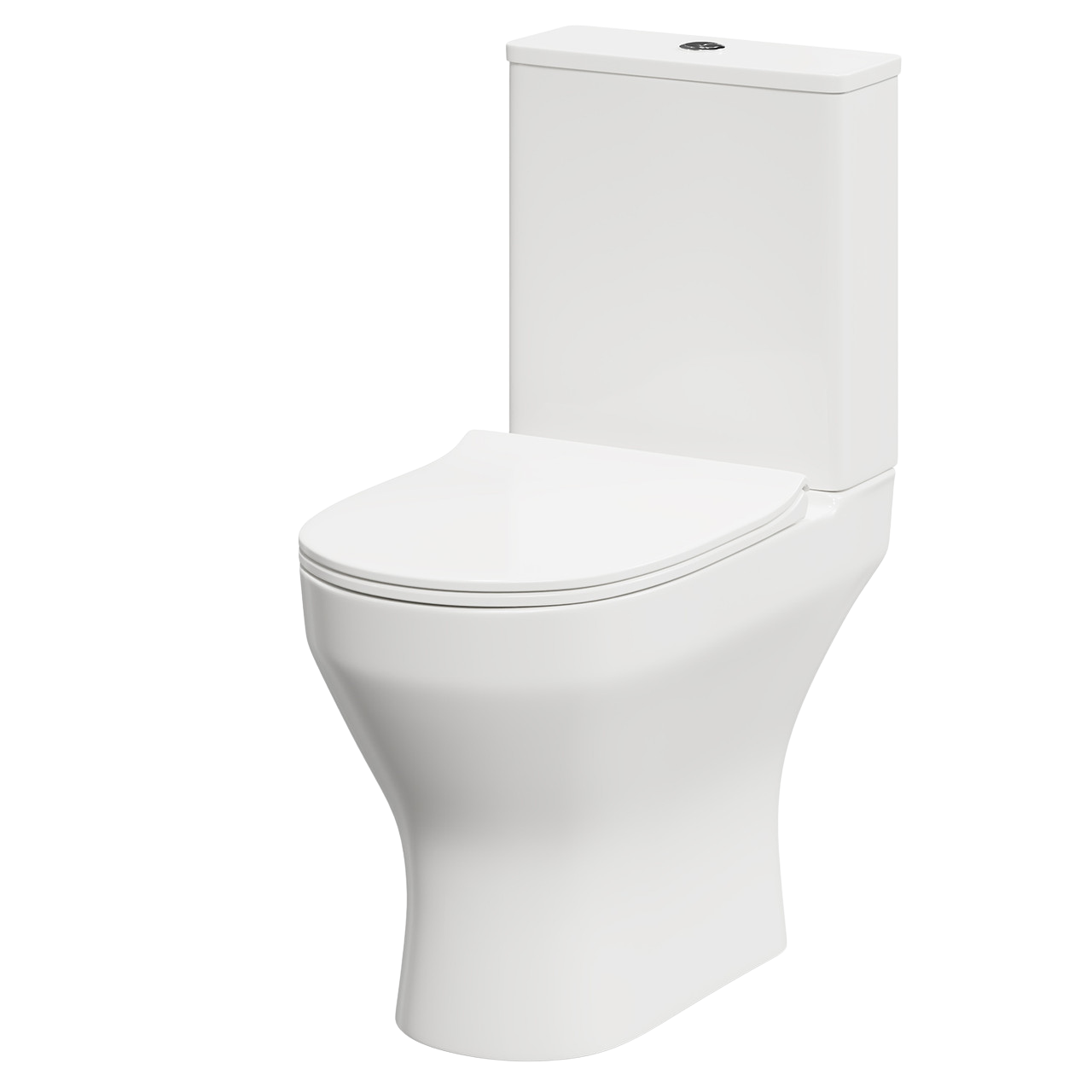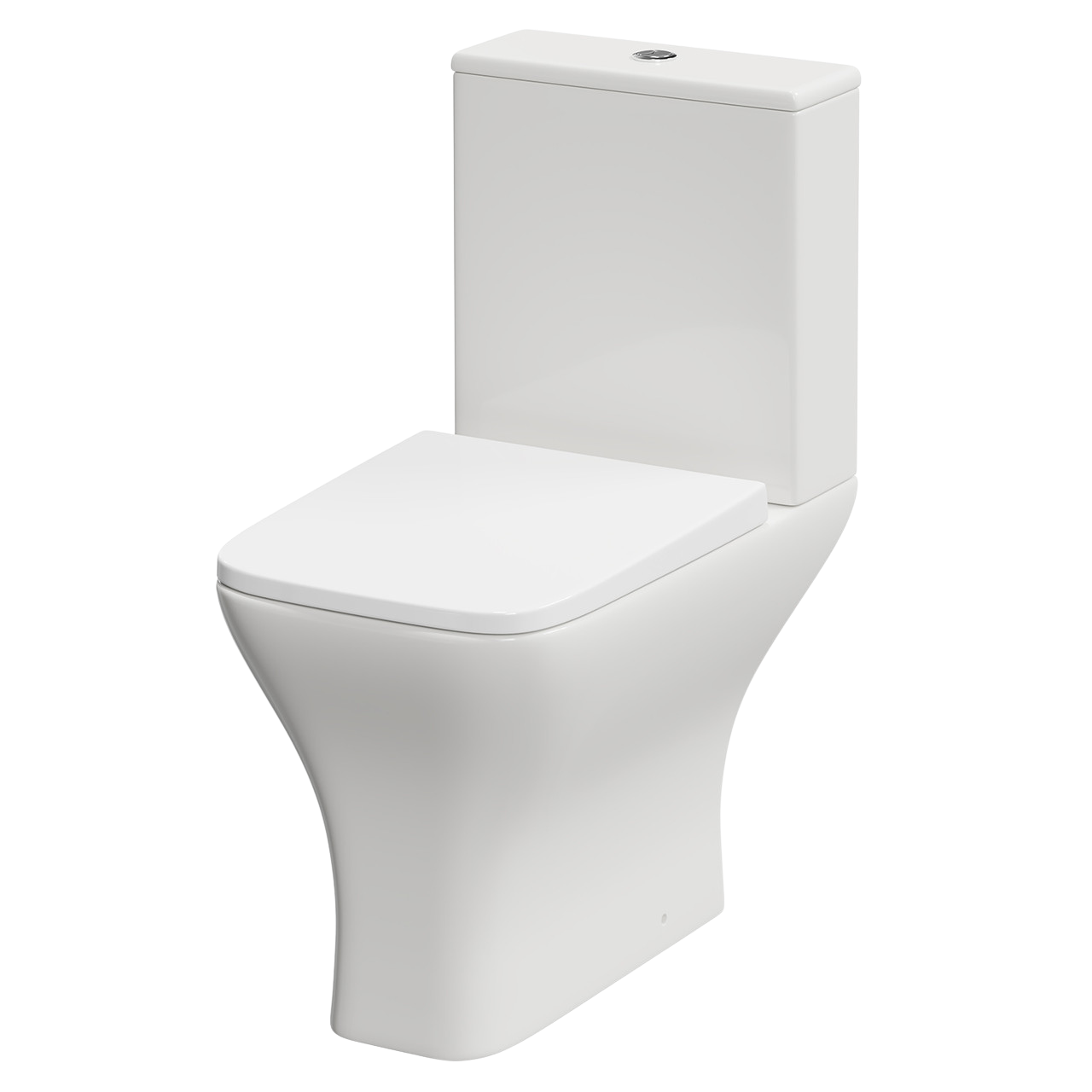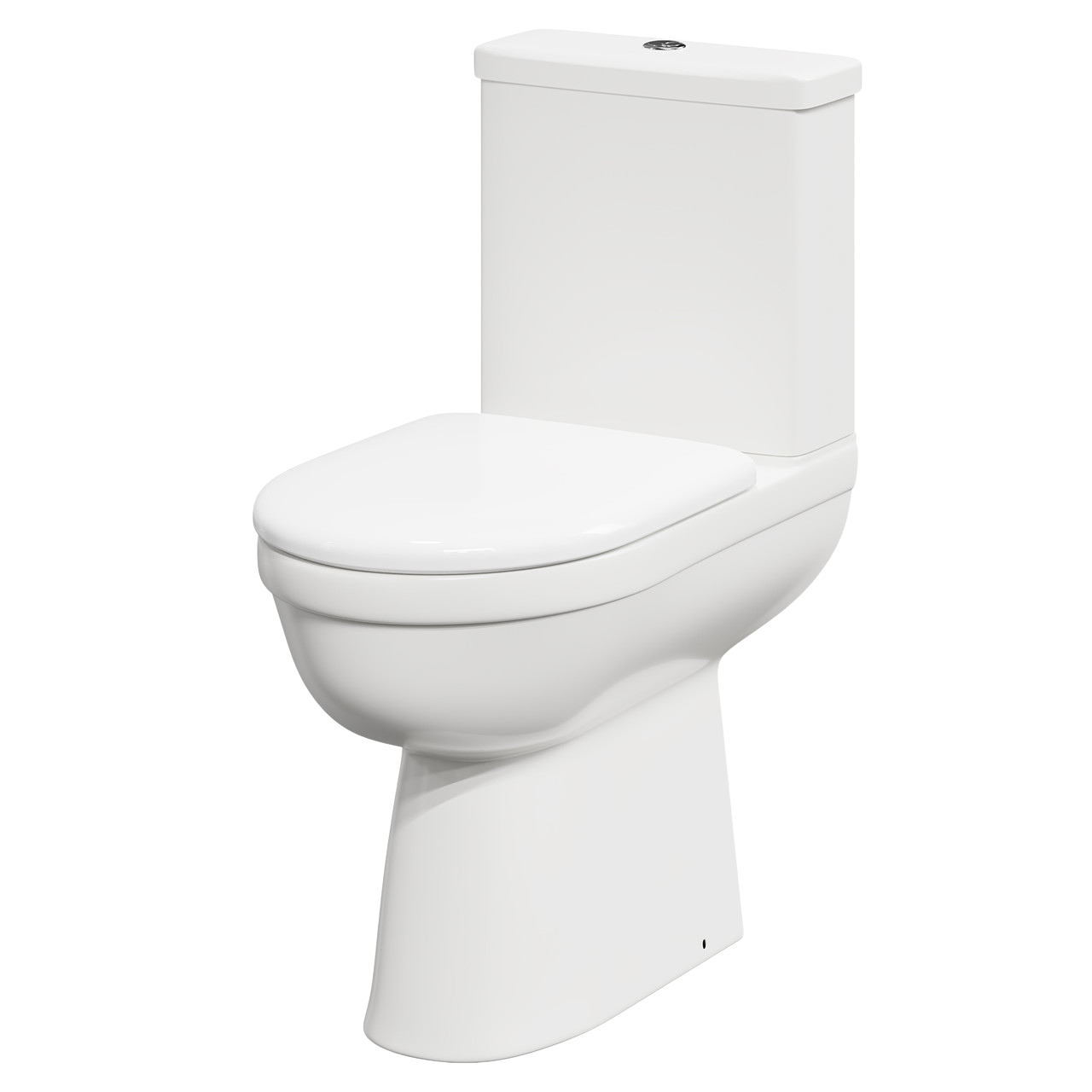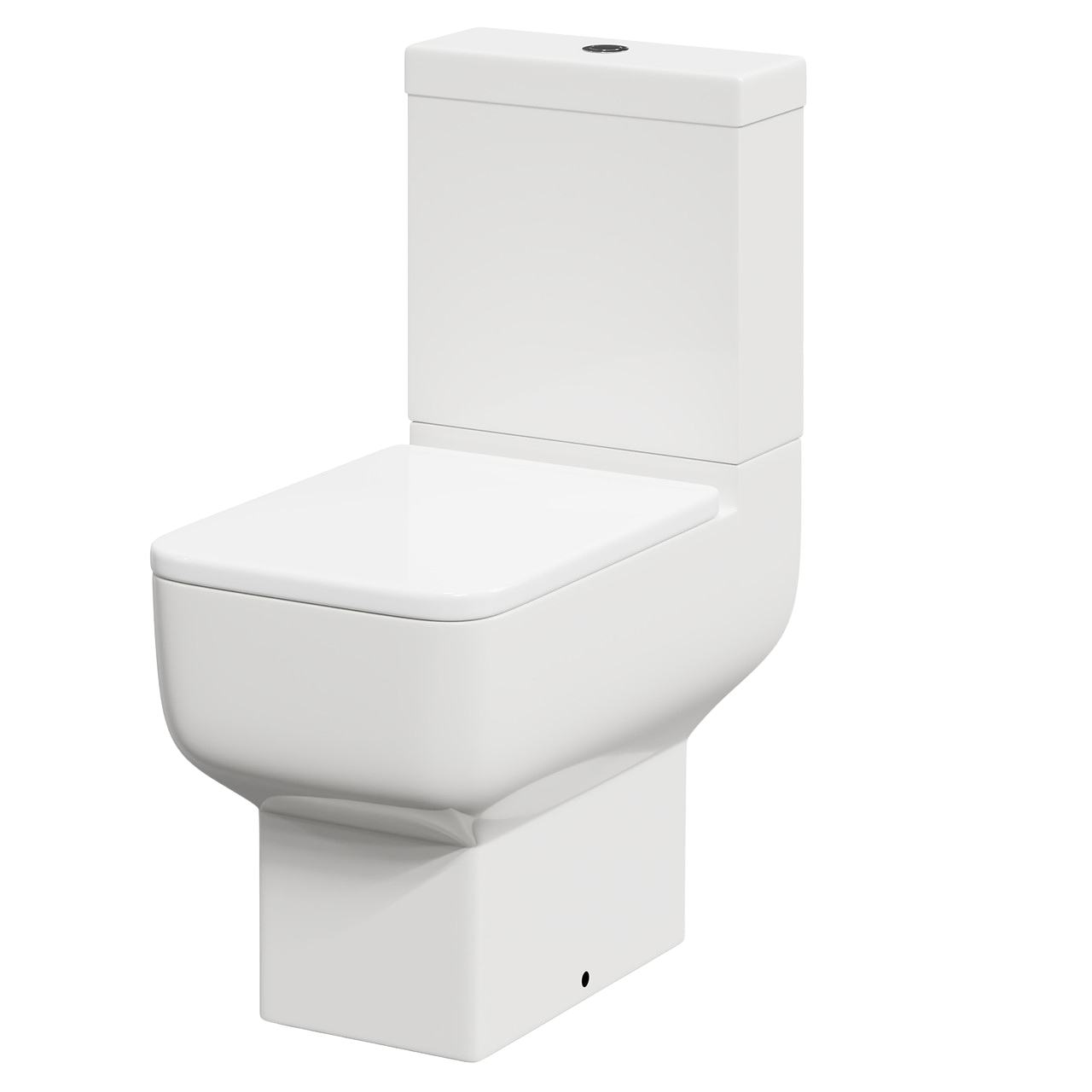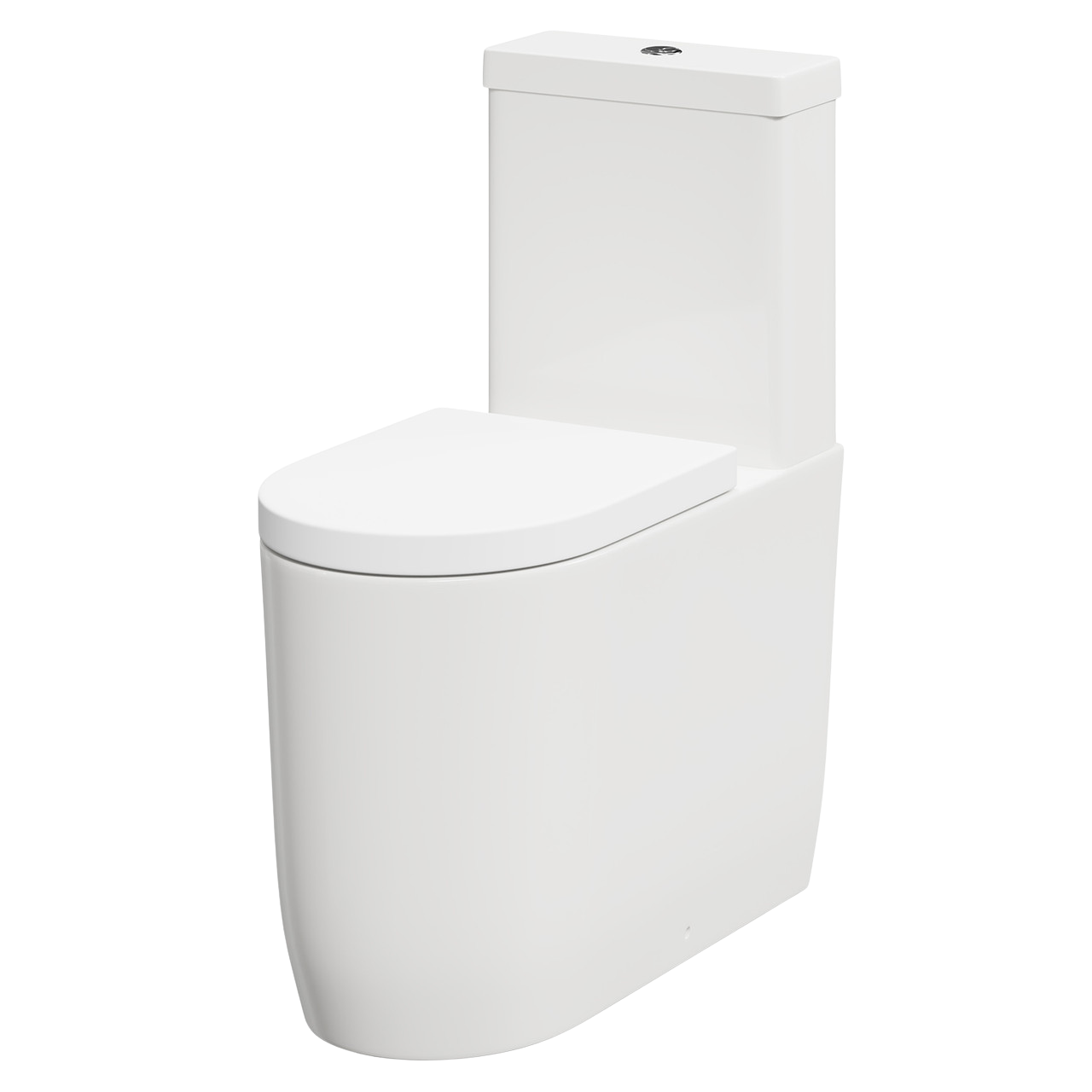What is a Close-Coupled Toilet? A Guide to Features, Types, and Benefits
20th May 2025
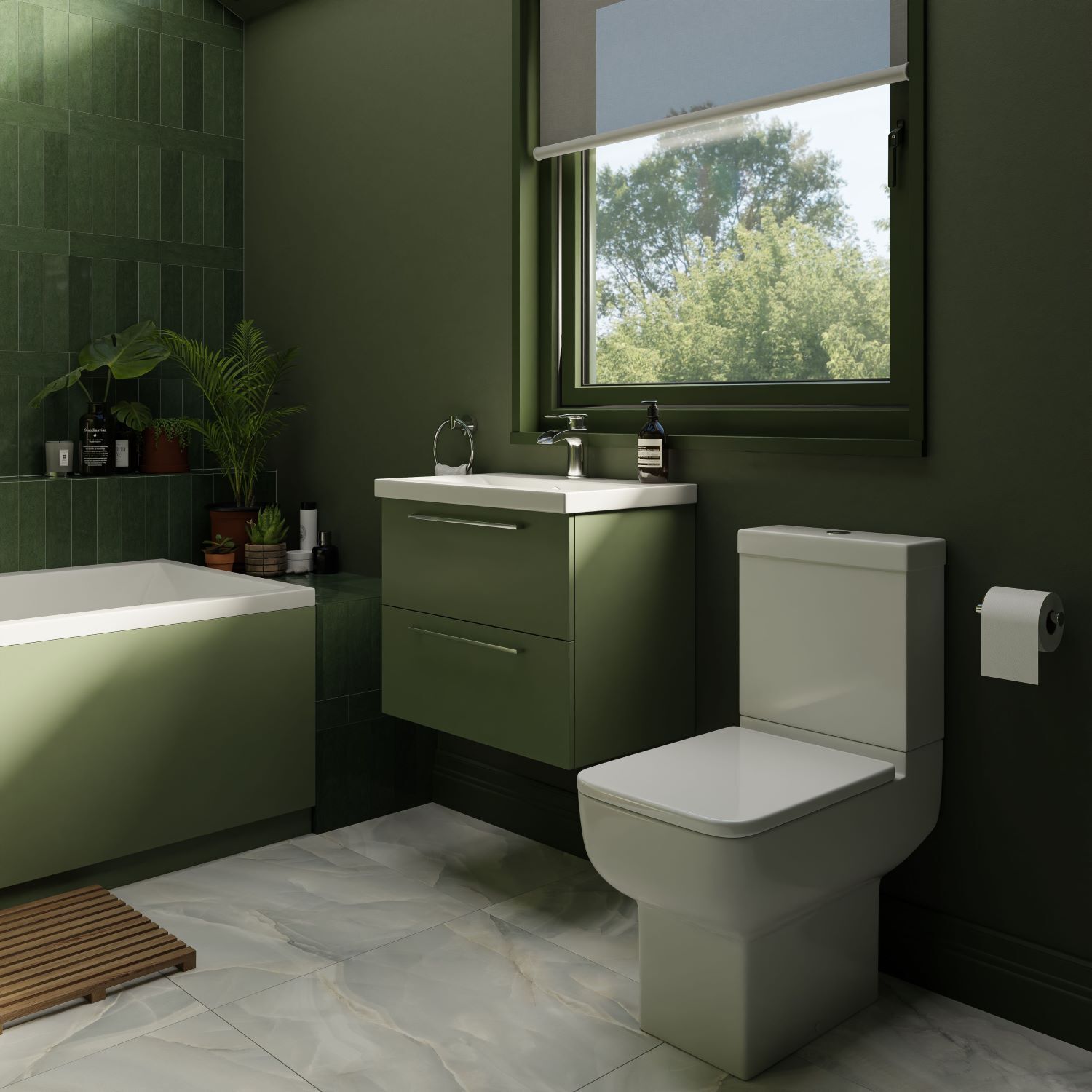
You might have come across the term ‘close-coupled toilet’ while searching for a new toilet or doing some bathroom research, but what does ‘close-coupled’ actually mean? If you're wondering what sets them apart from other types, you're in the right place.
In this guide, we'll cover everything you need to know about close-coupled toilets – from how they're designed to their benefits. We've also included expert insight from Brian Toward, CEO here at Wholesale Domestic, to help you decide if a close-coupled toilet is the right choice for your space.
Contents
- What is a close-coupled toilet?
- How does a close-coupled toilet work?
- What are the benefits of a close-coupled toilet?
- What are the components of a close-coupled toilet?
- Types of close-coupled toilets
- Frequently asked questions
What is a close-coupled toilet?
A close-coupled toilet is a popular choice for bathrooms across the country, but what does it actually mean?
Brian explains: “A close-coupled toilet is when the cistern – the tank that holds the water used for flushing – is attached directly to the toilet bowl. The cistern either sits right on top of the bowl or just behind it, which makes the whole unit compact and neat. This is great because it saves space in your bathroom while making sure the flush mechanism is still easy to access.”
These toilets were originally designed to offer a more modern alternative to the traditional toilet style reminiscent of Victorian-era plumbing. However, you can now find a variety of classic and contemporary options to suit any bathroom.
Close-Coupled
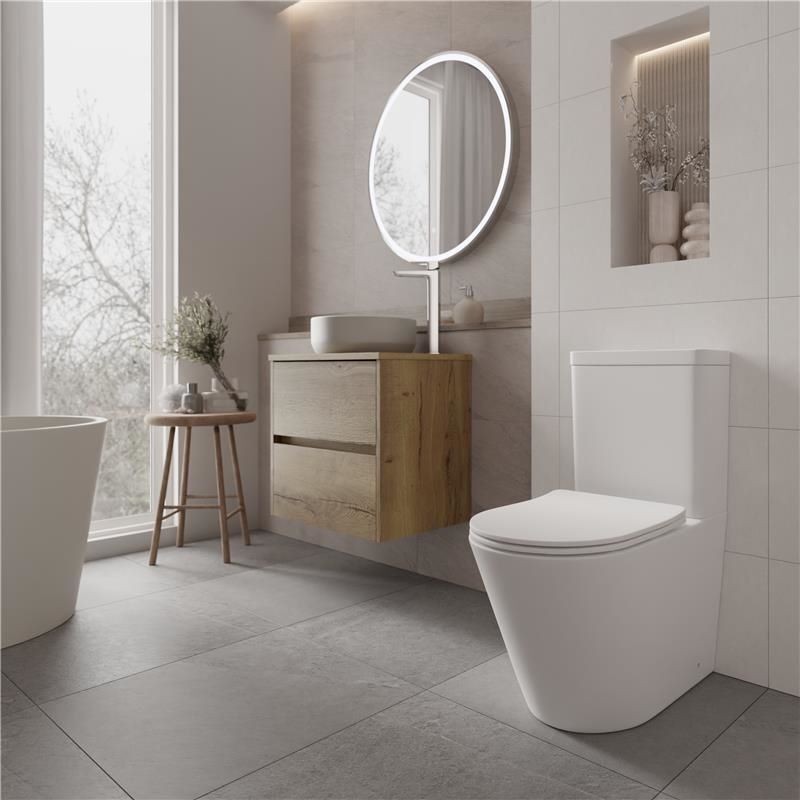
Wall Hung
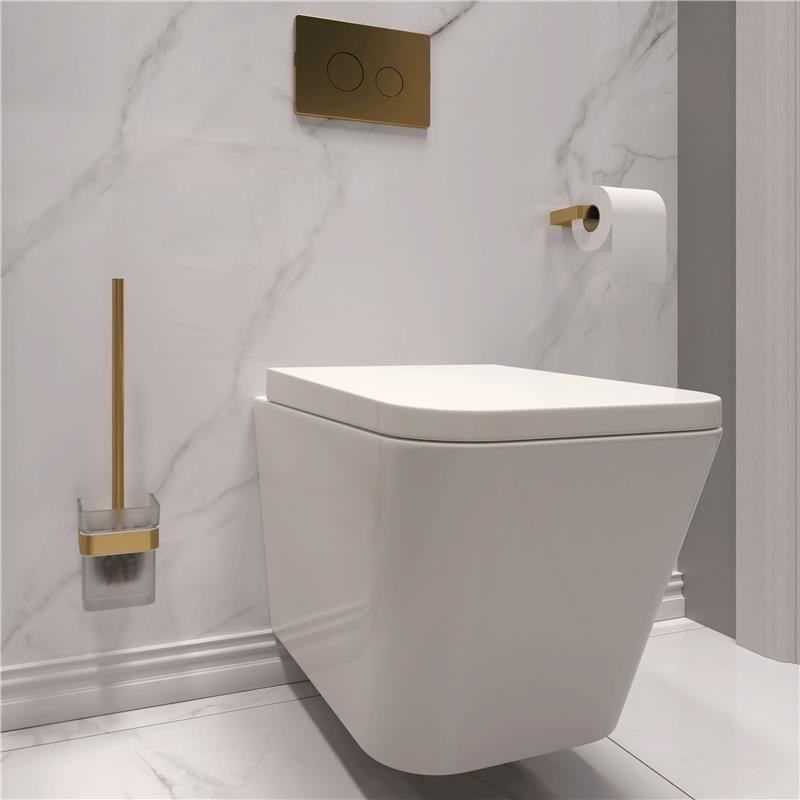
How does a close-coupled toilet work?
While the name can be misleading, a close-coupled toilet is fairly simple when you break it down.
The cistern (water tank) is directly connected to the toilet bowl, meaning that when you flush, there's no need for the water to pass through a series of pipes.
When you press the flush button or pull the handle, the water is released directly into the bowl. Many close-coupled toilets also come fitted with a dual-flush system, giving you the option to use less water for liquid waste and a bit more for solid waste.
In addition to being quick and easy to use, the toilet's design hides most of the internal components, giving it a tidy look without needing a lot of wall or floor space like some other traditional toilet models.
What are the benefits of a close-coupled toilet?
When it comes to picking the right toilet for your bathroom, a close-coupled toilet has a lot of perks. Here are some of the reasons why this classic design continues to be so popular:
1. Classic design
A close-coupled toilet is what many of us imagine when we think of a standard toilet. With the cistern tucked behind the bowl, it's compact, easy to maintain, and fits almost any bathroom design. Whether you're creating a more traditional bathroom with vintage fixtures like pedestal basins and freestanding bathtubs or a modern, minimalist space, a close-coupled toilet can work seamlessly in either setting.
Brian says: "Close-coupled toilets are great because they're so adaptable. Whether your bathroom has a traditional look or is more of a modern space, this style works well in both. It's also compact, with no need for much wall or floor space, making it ideal for various bathroom sizes."
2. Easy to install
One of the biggest advantages of opting for a close-coupled toilet is how easy it is to install.
Brian explains: "If you're just swapping out an old toilet, a close-coupled toilet is perfect and can be fitted in just a few hours. Because the cistern and toilet bowl are already attached, there's no need for complex plumbing work. This makes things much easier if you're updating your bathroom without a full renovation."
3. Inexpensive
A close-coupled toilet is also a budget-friendly option. Compared to other toilet styles, they tend to be much more affordable in terms of purchase price and installation costs.
Brian says: "If you're looking for a solid, reliable toilet but don't want to break the bank, a close-coupled toilet is a great choice. You can find them for as little as £100, and even the pricier models with additional features like bidets still offer great value for money. They're definitely one of the more affordable options, and you won't have to pay a premium for quality."
4. Long-lasting
The close-coupled toilet is also known for being particularly durable. It's a fantastic choice if you want something that'll withstand regular use and last for years.
Brian adds: "I always recommend a close-coupled toilet for its durability. The cistern and bowl are connected securely with far fewer moving parts, making it sturdy and less prone to wear and tear than other toilet styles. It's built to handle daily use, which makes it a long-lasting investment for your bathroom."
5. Variety of styles
A great thing about the close-coupled toilet is that it comes in a variety of sizes and styles. Whether you have a small bathroom or a spacious en-suite, you can find one that fits your space.
Brian says: "What I love about the close-coupled toilet is its versatility. If you're working with a small bathroom, there are short projection models with a smaller toilet bowl to save space. Or, if you're working with a larger bathroom, you can opt for a more traditional design. They're available in modern and classic styles, making sure there's a close-coupled toilet for every bathroom."
What are the components of a close-coupled toilet?

Understanding the components of a close-coupled toilet can help you see how this straightforward design works and why it's such a popular choice. Let's break down the key parts:
Dual flush buttons / flush levers
Many modern close-coupled toilets have a dual flush button on top of the cistern. This allows you to control the amount of water used with each flush, making it more environmentally friendly.
Typically, there will be two options – a smaller flush for liquid waste and a larger one for solid waste. Being able to choose the right flush for your needs helps reduce water consumption, making the close-coupled toilet more efficient. If your toilet is more traditional, you may have a regular flush lever instead, offering a consistent flush every time.
To learn more, read our guide on What Is a Dual Flush and How Do They Work?
Close-coupled cistern
The cistern is the water storage tank that sits directly behind the toilet bowl. This is a defining feature of a close-coupled toilet and can either be wall-mounted just behind the bowl or integrated directly into the back of the toilet for a smaller, space-saving design.
Toilet bowl
Of course, the bowl is where you sit while using the toilet. In a close-coupled toilet, the bowl is closely attached to the cistern for a slimline structure.
Waste pipe
The waste pipe is what connects your toilet to the plumbing, draining the water and waste away from the toilet. In a close-coupled toilet, the waste pipe is exposed but usually still relatively discreet, located directly behind the toilet bowl, so it's not too visible.
Seat
Like all toilets, close-coupled toilets come with a seat. These often feature a soft-close mechanism, a modern addition that enhances the overall user experience.
This means the toilet seat and lid close slowly and quietly, preventing slamming. Soft-close seats are especially practical for families or busy households, as they help prolong the seat's life and reduce noise.
Types of close-coupled toilets
Close-coupled toilets come in a wide range of styles, which means there's one out there to fit every bathroom, no matter the size or design. Whether you have a spacious bathroom or a smaller en-suite, there's something to work for your space.
Here are a few popular types of close-coupled toilets to consider:
Short projection close-coupled toilets
Short projection close-coupled toilets are an excellent choice for compact bathrooms with limited space. They have a smaller footprint than traditional models, and their shallower toilet bowl allows them to fit into tighter areas without compromising on comfort.
Despite their reduced size, they still offer the same functionality as standard close-coupled toilets. With their efficient design, they're ideal for en-suites and guest bathrooms.
Rimless close-coupled toilets
Rimless close-coupled toilets are a modern twist on the classic close-coupled style, featuring a toilet bowl without the traditional rim inside. This design not only offers a sleek look but also makes deep cleaning the toilet much easier, with fewer places for bacteria and dirt to accumulate, making it a hygienic choice for any bathroom.
The flush is also more powerful in these rimless models, removing waste while using less water.
Comfort height close-coupled toilets
Comfort-height close-coupled toilets are designed with a taller seat that sits further off the floor, making them an excellent choice for those with mobility issues. With a height closer to a standard chair, these comfort-height toilets provide easier access for those who find it difficult to sit down or stand up from a lower toilet.
Whether you're looking to create a more accessible bathroom or want added comfort, these toilets offer a stylish way to upgrade your existing model.
Open-back close-coupled toilets
Open-back close-coupled toilets feature a small gap between the cistern and the wall, which makes the plumbing much easier to access for installation or maintenance. While they still have a traditional close-coupled appearance, they can be more convenient if you need to make repairs in the future.
Closed-back close-coupled toilets
Closed-back close-coupled toilets provide a sleek, seamless design, with the cistern sitting flush against the wall for a tidy, minimalist look. This means there are no gaps between the cistern and wall, making it easy to keep clean while making access to the plumbing slightly more challenging.
To find out more about the different models available, see our Toilet Buying Guide.
Frequently asked questions
What is the difference between a close-coupled and a back-to-wall toilet?
The main difference between a close-coupled toilet and a back-to-wall toilet is where the cistern sits.
With a close-coupled toilet, the cistern is directly attached to the back of the toilet bowl, giving it a more traditional look. The cistern is visible and easy to access for maintenance.
On the other hand, a back-to-wall toilet has its cistern hidden inside the wall or a back panel, creating a minimalistic design that works well in modern bathrooms.
How do I use a close-coupled toilet?
Using a close-coupled toilet is pretty simple. Just press the flush button or pull the lever to empty the bowl. The cistern, which is attached directly behind the toilet, will fill with water and flush the waste away.
Can I install a close-coupled toilet myself?
While it's possible to install a close-coupled toilet yourself, we recommend getting a professional plumber for the job. It's essential to make sure that the toilet is securely fitted, the plumbing is connected correctly, and the flush mechanism is working properly.
Plus, a professional can help avoid any issues with leaks or water flow, giving you peace of mind that everything's set up right.
Are close-coupled toilets eco-friendly?
Yes, close-coupled toilets can be eco-friendly – especially if they're fitted with a dual flush mechanism.
With a dual flush, you can choose between a smaller flush and a larger option for clearing solid waste. This helps to reduce your water usage, making the toilet more efficient and better for the environment. Look for models with low flush ratings (e.g. 3-4 litres) to make the most of water-saving technology.
Is a close-coupled toilet old-fashioned?
Not at all! We have a huge range of close-coupled toilets to choose from, with styles ranging from highly modern to classically traditional, depending on the look you want to achieve.
Find the perfect close-coupled toilet at Wholesale Domestic
Now that we've covered how close-coupled toilets could be the perfect fit for your bathroom, it's time to choose your next model.
At Wholesale Domestic, we offer a wide range of close-coupled toilets to match every bathroom design. From traditional models to modern styles, we've got options to fit every taste and budget. Complete your setup with a new toilet seat, toilet brush, and a custom flush plate.
If you're unsure whether a close-coupled toilet is for you, why not explore our full range of toilets today? Or, for more bathroom inspiration, take a look at our blog.

 FREE delivery over £500*
FREE delivery over £500* Visit our showrooms
Visit our showrooms Finance options available*
Finance options available* Apply for a Trade Account
Apply for a Trade Account
